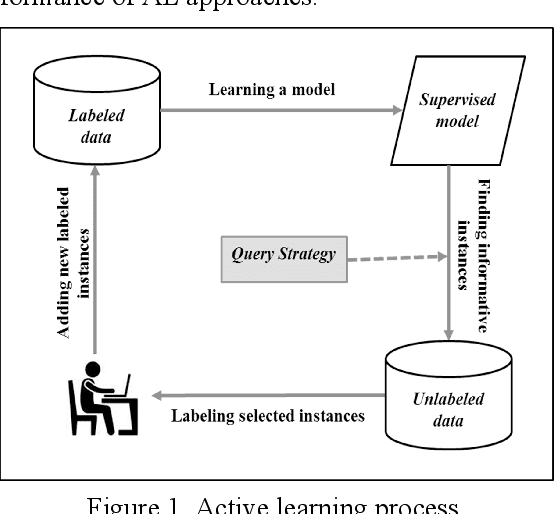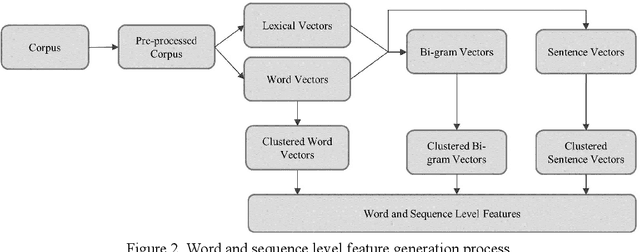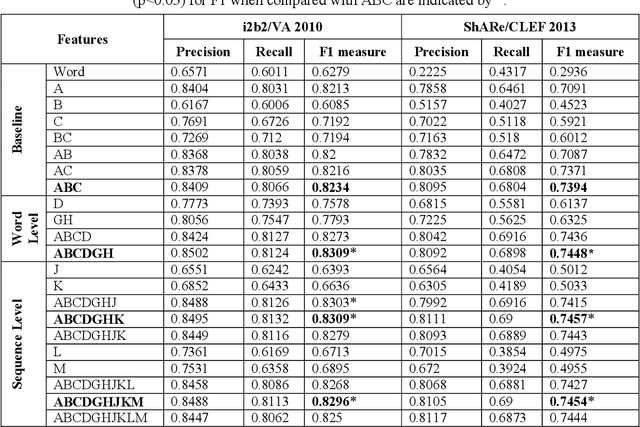Lance De Vine
The Benefits of Word Embeddings Features for Active Learning in Clinical Information Extraction
Nov 15, 2016



Abstract:This study investigates the use of unsupervised word embeddings and sequence features for sample representation in an active learning framework built to extract clinical concepts from clinical free text. The objective is to further reduce the manual annotation effort while achieving higher effectiveness compared to a set of baseline features. Unsupervised features are derived from skip-gram word embeddings and a sequence representation approach. The comparative performance of unsupervised features and baseline hand-crafted features in an active learning framework are investigated using a wide range of selection criteria including least confidence, information diversity, information density and diversity, and domain knowledge informativeness. Two clinical datasets are used for evaluation: the i2b2/VA 2010 NLP challenge and the ShARe/CLEF 2013 eHealth Evaluation Lab. Our results demonstrate significant improvements in terms of effectiveness as well as annotation effort savings across both datasets. Using unsupervised features along with baseline features for sample representation lead to further savings of up to 9% and 10% of the token and concept annotation rates, respectively.
Parallel Streaming Signature EM-tree: A Clustering Algorithm for Web Scale Applications
May 21, 2015



Abstract:The proliferation of the web presents an unsolved problem of automatically analyzing billions of pages of natural language. We introduce a scalable algorithm that clusters hundreds of millions of web pages into hundreds of thousands of clusters. It does this on a single mid-range machine using efficient algorithms and compressed document representations. It is applied to two web-scale crawls covering tens of terabytes. ClueWeb09 and ClueWeb12 contain 500 and 733 million web pages and were clustered into 500,000 to 700,000 clusters. To the best of our knowledge, such fine grained clustering has not been previously demonstrated. Previous approaches clustered a sample that limits the maximum number of discoverable clusters. The proposed EM-tree algorithm uses the entire collection in clustering and produces several orders of magnitude more clusters than the existing algorithms. Fine grained clustering is necessary for meaningful clustering in massive collections where the number of distinct topics grows linearly with collection size. These fine-grained clusters show an improved cluster quality when assessed with two novel evaluations using ad hoc search relevance judgments and spam classifications for external validation. These evaluations solve the problem of assessing the quality of clusters where categorical labeling is unavailable and unfeasible.
Random Indexing K-tree
Feb 02, 2010



Abstract:Random Indexing (RI) K-tree is the combination of two algorithms for clustering. Many large scale problems exist in document clustering. RI K-tree scales well with large inputs due to its low complexity. It also exhibits features that are useful for managing a changing collection. Furthermore, it solves previous issues with sparse document vectors when using K-tree. The algorithms and data structures are defined, explained and motivated. Specific modifications to K-tree are made for use with RI. Experiments have been executed to measure quality. The results indicate that RI K-tree improves document cluster quality over the original K-tree algorithm.
 Add to Chrome
Add to Chrome Add to Firefox
Add to Firefox Add to Edge
Add to Edge